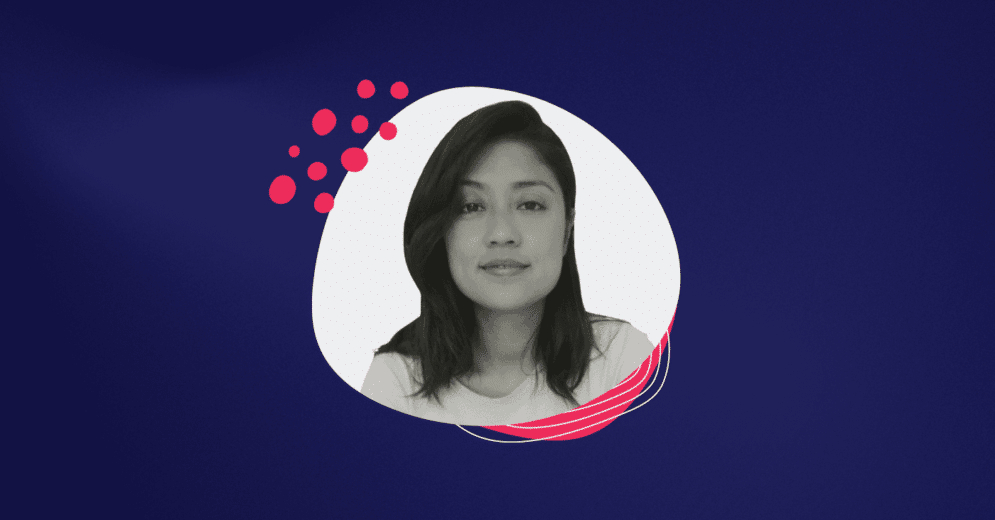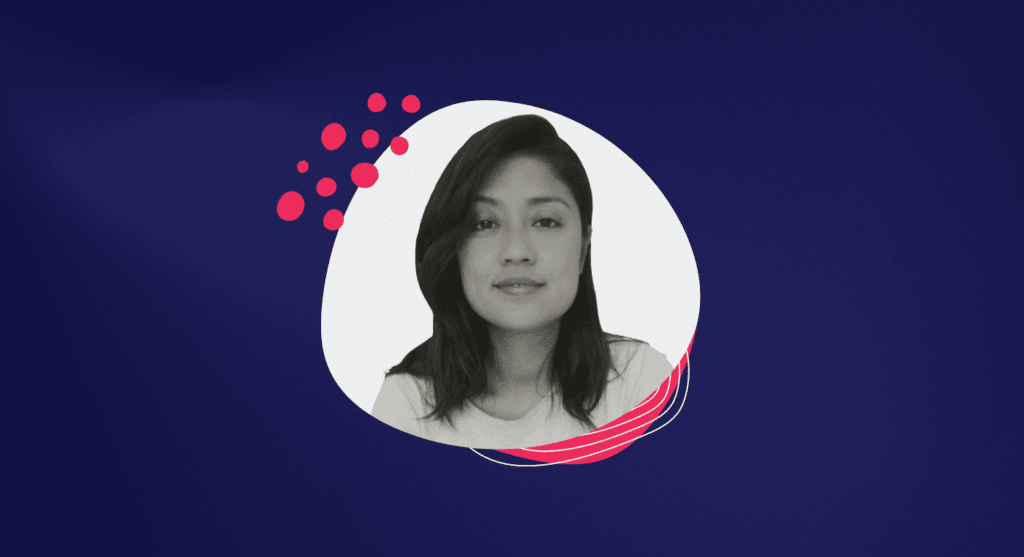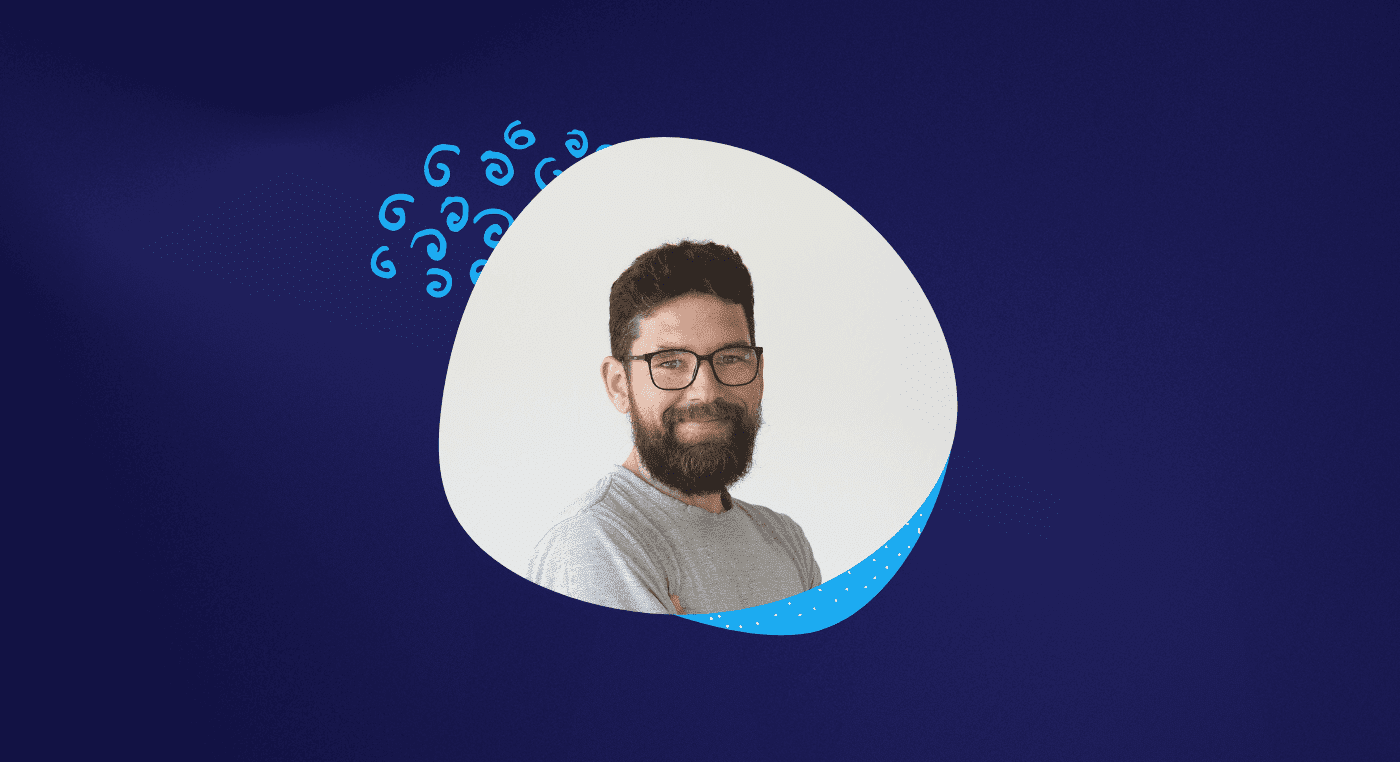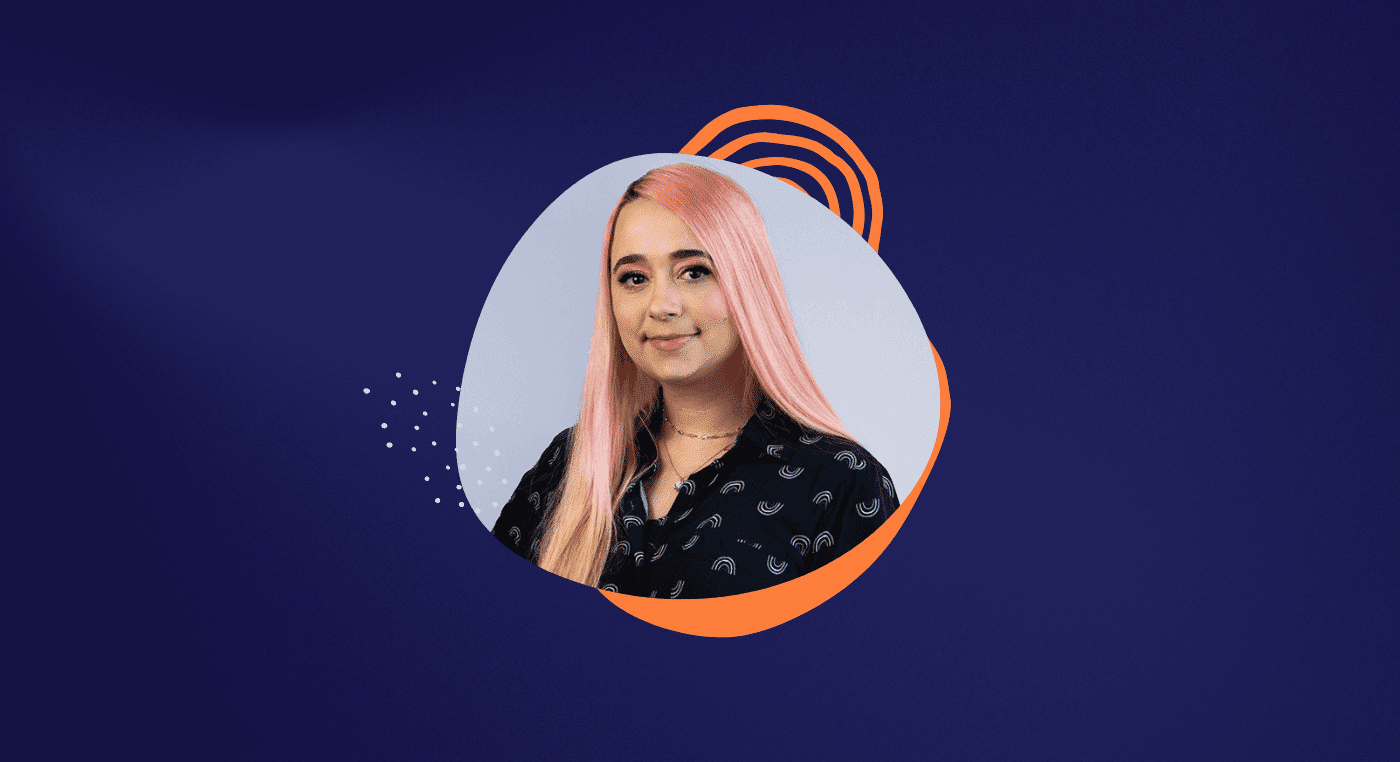Monique is a Mastering Interface Design (MID) program student, focused on UX Design, and currently working in Lisbon.
In this interview, she tells us her inspiring story of how she went from being a text editor, to a psychotherapist, and then to a UX Designer.
She also shares tips on how she organized her studies and how psychology was instrumental in her interest in UX.
Monique, can you tell us a little bit about yourself?
My name is Monique and I have a degree in Portuguese-Spanish Literature, but I have studied English on my own since I was very young.
After I graduated, I worked as a text editor, but I didn't really enjoy it that much.
Despite that, I was a very good text editor, and for years people kept offering me work, even though I didn't want to keep doing it.
So, I decided to change my career and turn my hobby into work. I've always loved drawing, so I started working as a designer/illustrator at a company that produced educational videos. There, I began to work more with interfaces.
We created interfaces for online classes in the Moodle platform for our clients.
After that experience, I continued working as a designer and illustrator. But at one point, I grew tired of that lifestyle and realized I needed to step outside my comfort zone.
So, I went to Ireland to study psychotherapy. That was my second degree.
Throughout my journey, psychology became a major passion for me. In fact, it wasn't because of design that I shifted to UX Design, it was because of psychology.
At one point, I decided that I didn't want to work as a psychotherapist, so I started looking into other possibilities.
A friend of mine asked me why I didn't try UX and sent me a link to Aela. I subscribed to Aela’s newsletter and began to receive some content.
But at that time, my life in Ireland was very busy and I couldn't even open my emails properly. One day, I opened my email and saw a message from Aela. I did some research and decided to learn more about it.
I had already taken a very quick course on UX Design to see if I would like the field, and I fell in love with it. That's why when I learned about Aela’s MID program, I immediately enrolled in it.
I realized that UX was what I really wanted, I fell in love with the field and Don Norman's book Emotional Design is the love of my life.
Because of that, I wanted to dive headfirst into UX Design.
As an illustrator, I ended up killing my hobby, and that was a very heavy thing in my life. Drawing became a bad thing, and I needed something different, something that was also a passion but for work.
Today, I work as a UX Designer for some companies and live in Lisbon, Portugal.

Your background is very interesting and you could have gone in many different directions. What about psychology made you want to work in UX?
I think it was the study of human behavior. When I chose psychology, I wanted to help people. I was very dissatisfied with design because it was quite a selfish type of work.
There was a lot of ego involved, people wanted to be the best, and so on. I was tired of that and wanted a job that could truly help people, and that's why I turned to psychotherapy.
However, I didn't fit in too well with the therapy aspect. I always leaned more towards human behavior, observing behaviors and trying to help people from there.
Psychotherapy is different from psychology. Psychology studies human behavior. Since psychology was a very expensive course in Ireland, I decided to do psychotherapy which encompasses that part of behavior but focuses more on therapy.
In the therapy part, we learn a lot of things that can be applied to UX, such as empathy and knowing how to listen to people. As a therapist, you listen a lot to people, and from there, you try to help them and guide them toward the best path for themselves.
I noticed these similarities between psychotherapy and UX, and when I read Don Norman's book, I was surprised by everything.
Norman has a lot of cognitive-behavioral issues, which is what caught my attention in UX Design.
Trying to understand people's cognition and behavior, trying to bring that and translate it into a good experience with a product or service.
Reading Tip: The Importance of Psychology in UX Design
What convinced you that UX Design was what you wanted to work with?
I think it was exactly the connection between psychology and human behavior with Design.
In the course I took before the MID, the approach was very good. But it was a course to explain what UX Design is and not a course to train UX Designers.
When Aela launched the workshop, I participated and that opened my mind. I thought it was exactly what I wanted.
So, obviously, I enrolled in the MID and watched the classes.
It was very interesting because what helped me the most were not only the classes in the program, but the extra classes and the interaction with the community.
From that point on, I began to notice many things about UX Design, which was a lot of what I had already imagined.
When I worked as a designer, something that bothered me a lot was having to do something very quickly and deliver with low quality, just to meet the deadline. That really bothered me.
This even happened when I was still a text editor because that is a job that takes time to deliver something with quality. Not having this delivery broke my heart.
I realized that this concern with quality and mindset, in UX, was different. And I wanted to work with that.
Another thing that made me transition to UX was really Don Norman's book, which is my bedside book to this day. It was one of the books that excited me the most. Every paragraph I read made me so excited. I made several notes and all.
I related so much to it.

How did you organize your routine to make studying flow better? Do you have any tips?
One tip is to not think that you are falling behind just because you don't have time to study and end up getting desperate. That happened to me a lot. I hit my head against the wall with it. It wasn't easy. It was very difficult! And it's okay for it to not be easy because it's really hard.
I have a Japanese heritage, so the pressure I put on myself is huge. I was always pressuring myself to study and I did study a lot. When the pandemic broke out and all the chaos began, for me it was a good moment as I had free time to study.
In this sense, I was very privileged to be in Ireland during this period. The government helped people who were out of work, so I was receiving money to stay afloat.
With that, the pressure became even greater. I thought I couldn't stay still, I was receiving money to study, so to speak. I threw myself headfirst into my studies.
During that period, many things happened at the same time, I was moving countries and this whole process was not easy, you know.
But my will was so strong that I tried very hard. Every time I could, I spent time studying. Another important tip is to prioritize studying. Refining what you're studying is very important and I still do that… I think I do it even more today.
One difficulty I had during this period was being distant from technology and such. I didn't know much about this subject. So I needed to research a lot about technology. I used Google all the time and it overloaded my head, making me feel tired.
But that's okay, it's important to have time to rest. That's the main thing. Don't pressure yourself too much, because things will flow. That's what it was like for me. When I decided not to pressure myself so much, when I began to understand things more, everything flowed better.
At this point, the structure of the MID program was very important to me. Going step by step is fundamental.
Sometimes you want to hurry, but the more you rush, the farther you are from your goal. There were times when I was in a hurry, and that's why I couldn't study properly. Things became more confusing for me to understand.
When I understood that it had to be done in small steps, things got better.
Another thing that helps a lot is knowing your own limits. I, for example, am a very slow reader. So, reading a book in one month is too much for me! It's okay for you to go at your own pace.
Finally, I realized that despite my design background, we think we know things, but actually we don't know anything! I had to learn a lot and relearn many things. In fact, my background in graphic design didn't help me much. I think graphic design encompassed about 30% of everything I learned.
At the end of the day, UX Design involves many things, such as business, human behavior, and so on. It's a lot to take in at the same time and graphic design doesn't account for much.
Reading Tip: Studying in Partnership Helped Me Switch to UX Design – Interview with Giulia Pignati
I've noticed that those who come from a graphic design background usually work with project briefings. However, in UX design, you gradually build upon the project as you go. Have you had any difficulty adjusting to this?
Personally, I struggled with this because I'm a perfectionist, and I don't see that as a good thing. In fact, I now see it as more of a problem than a solution.
I used to feel a lot of anxiety because of this and felt the need to deliver perfect, flawless projects. However, I've come to realize that this isn't how things work.
One thing that helped me a lot was to completely detach myself from graphic design and remind myself that UX is not the same thing. This mindset really helped me put things into perspective.
In a way, it was similar to when I decided to study English. I taught myself English from a young age by watching movies, but as an adult, I decided to take an English course. Many people told me that I could skip the beginner level and move straight to the intermediate, but I didn't want to do that.
I wanted to start from the basics to learn proper grammar. So, I think that the same logic applies to UX design. Even if you have a background in graphic design, there are still plenty of things you don't know or may have forgotten.
For me, UX design is different from graphic design, at least based on what I learned in the past.

You mentioned refining your studies. What piece of advice would you give to someone who needs to do that?
Basically, what I do is have critical thinking. As you gain maturity, you understand how to refine things. You learn what is good and what is not good for you.
Secondly, you realize that certain content is not necessarily adding anything new, they are just repeating things we have already read or seen. You learn which content is more aligned with what you need at the moment.
For example, I really want to specialize in research. So, I will look for research content. Today, I know who the content creators for research are that add value to me. But I think critical thinking is the key.
With the boom of UX content creation, we have to know what we are reading and watching because you can waste a lot of time watching things that are not adding anything to you.
Today, I use a technique that I learned in college in Ireland, which is basically to search for PDF files, scientific articles, and these kinds of things to study.
There is a lot of content on the internet based on hypotheses, which is very dangerous. We have to avoid guesswork. The way I avoid guesswork is with scientific articles.
Even then, you must have critical thinking to be able to challenge the article. Is that really true? So, I will look for other materials to reinforce that content.The other day I was looking up Dark Mode, how good or bad it is, how we use it, etc. I searched for scientific articles, not on Medium. Because sometimes it's very dangerous.
Reading Tip: 9 Soft Skills to Stand Out as a Designer
How was the process of deciding to look for a job in UX Design? Did you feel ready for it?
I didn't feel ready. We never feel ready, especially if you have imposter syndrome like me.
For me, it was really strong and I worked on it a lot in therapy to try to feel that I'm good enough.
As an illustrator, I used to say, "I won't start a drawing because I don't have that pen, that brush, that watercolor." I used to sort of sabotage myself.
I decided to cut these things out of my life.
From the moment I thought I would embark on this journey, things got better.
I thought about how much I can add value, my enthusiasm and willingness, and my knowledge.
In my second year of studying UX Design, I worked hard to dedicate myself both to my studies and to applying for jobs.
I learned a lot from this process.
Sometimes I was afraid of receiving a "no," of feeling rejected and frustrated.
But in the end, these "nos" taught me a lot. And the recruiters themselves also taught me a lot.
There was a case where a recruiter took an hour out of his day to teach me something.
So, I always had a lack of self-confidence, and I worked on that and things started to fall into place.

If you could go back in time when you first got interested in UX Design, what would you say to yourself?
I think I would tell myself to have more confidence and believe in myself. We often think we can't do it, but we can. We are self-sufficient. I would also tell her to relax.
As I said, I always put a lot of pressure on myself. And the pressure at that time was so intense that I almost had burnout. I still have difficulty picking up books after a day of work.
I graduated from two colleges, did two final papers at the same time, and all of that was very stressful. So, take a break and be gentle with yourself. Do things at your own pace.
I wound up rushing because I needed to rush out of necessity. But I would tell myself to take it easy and not be so hard on myself.
One thing is studying hard; another thing is studying and punishing yourself. I used to do that.








